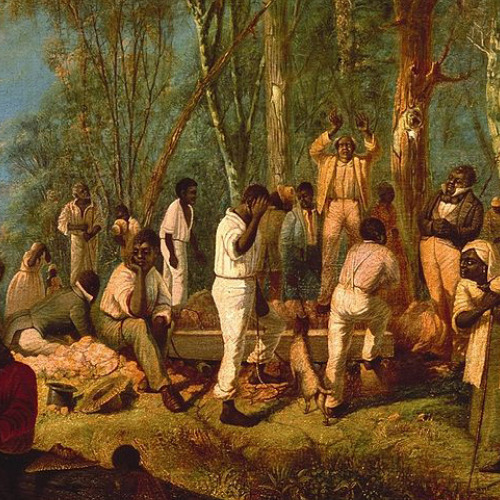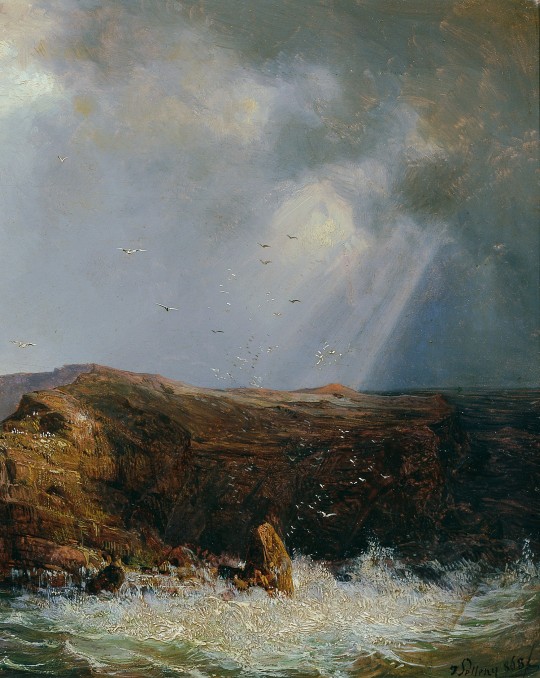#Sea Islands
Text


☁️ support me!
#beach aesthetic#beachlife#beach#sea aesthetic#sea beach#sea islands#sea life#sea lover#sea moodboard#oceancore#ocean view#ocean#hipster#soft grunge#grunge aesthetic#grunge#cozycore#cozy aesthetic#cozy#aesthetic blue#naturecore#nature core#nature#hipster aesthetic#vintage aesthetic#80s aesthetic#aesthetic#light academia#vintage#waves
21 notes
·
View notes
Text

морето взима това, което дава.
the sea takes what it gives.
#sea aesthetic#oceancore#ocean#waterfall#watercolor#sea#sea salt#sea islands#sea icons#mermaid#mermaids#islands#battle for dream island#connection with nature#nature#nature rights#rules#rules of nature#meeelis#rules of the game#rules of life#life#life lessons#life reflections#life rules
6 notes
·
View notes
Text

A story from a former slave, Mary Middleton, a Gullah woman from the South Carolina Sea Islands, told of an incident of a slaveholder who was physically weakened from conjure. A slaveholder beat one his slaves badly. The slave he beat went to a conjurer and the conjurer made the slaveholder weak by sunset. Middleton said, "As soon as the sun was down, he was down too, he down yet. De witch done dat." Bishop Jamison was born enslaved in Georgia in 1848 and wrote an autobiographical account of his life. On a plantation in Georgia there was an enslaved Hoodoo man named Uncle Charles Hall who prescribed herbs and charms for slaves to protect themselves from European people.

Hall instructed the slaves to anoint roots three times daily and chew and spit roots towards their enslavers for their protection. Another slave story talked about an enslaved woman named Old Julie who was a conjure woman and was known among the slaves on the plantation to conjure death. Old Julie conjured so much death, her slaveholder sold her away to stop her from killing people on the plantation with conjure. Her enslaver put her on a steamboat to take her to her new slaveholder in the Deep South. According to the stories of freedmen after the Civil War, Old Julie used her conjure powers to turn the steamboat around back to where the boat was docked, which forced her slaveholder who tried to sell her away to keep her.

#african#afrakan#kemetic dreams#africans#brownskin#afrakans#brown skin#african culture#afrakan spirituality#gullah geechee#gullah gullah island#mary middleton#civil war#old julie#deep south#freedman#south carolina island#sea islands#georgia
12 notes
·
View notes
Text
https://x.com/Phil_Lewis_/status/1703407420515442919?t=KZA9wU6ZOvHpoTyQobuXKQ&s=09

For over 230 years, Gullah-Geechee people called Georgia's Sapelo Island home County commissioners voted to remove zoning restrictions & to strike language stating it should prevent “land value increases which could force removal of the indigenous" folk
For more than 230 years, a small community of Gullah-Geechee people have called Sapelo Island off the coast of Georgia home. Hogg Hammock, the area on the island where these descendants of enslaved people live, is a 427-acre coastal community of 40 residents and has been designated as a historic site since 1996. That means that the construction of houses more than 1,400 sq ft and any road paving or demolition of property are strictly prohibited to preserve the island community.
On Tuesday, McIntosh county commissioners, who preside over Sapelo, voted to remove zoning restrictions in Hogg Hammock. Gullah-Geechee residents fear that wealthy transplants who want to develop larger homes and who could force a rise of property taxes there will displace them and upend their livelihoods.
The county, which is 65% white, has voted to remove official language that acknowledges Hogg Hammock as an area with “unique needs in regard to its historic resources”. It will also strike language that states it should prevent “land value increases which could force removal of the indigenous population”.

Last Thursday, dozens of residents gave hours of testimony to the county’s zoning board arguing against the proposed changes, warning that the county had hastily made changes without community consideration. Reginald Hall, a landowner whose family had roots in Hogg Hummock, told the Associated Press the county’s approval would amount to “the erasure of a historical culture that’s still intact after 230 years”.
Residents and state lawmakers called for the county to delay their vote and to reflect on proposed changes for 90 days. “We will not allow our cultural history to be erased or bought at the price of land developers,” the state representative Kim Schofield, who represents Atlanta, told reporters. “This is our history and our heritage, and we will fight to protect it.”
Hall warned the county’s vote to remove development limits would give Gullah -Geechee residents in Hogg Hammock just “two to three years at most” to survive in the county before they scatter elsewhere, as 200,000 Gullah-Geechee people have already done across the south-eastern corridor of the United States. “If you talk about the descendants of the enslaved,” she said, “90% of us will be gone.”
14 notes
·
View notes
Text

Carrie Mae Weems, Untitled (Sea Island Series) Plate 15, 1991-92.
4 notes
·
View notes
Photo

Gullah Red Rice
Gullah red rice is a South Carolina favorite and is baked with sausage, bacon, and a tomato sauce mixture for tons of flavor.
1 note
·
View note
Text
‘I Gullah Geechee, too’: the educators keeping a language of enslaved Africans alive https://www.theguardian.com/news/2024/apr/20/preserving-gullah-geechee-language
1 note
·
View note
Text

#summer#summer vibes#summertime#nature#landscape#beach#clouds#cloudcore#sunrise#islands#sunset#travel photography#island#travel#nature photography#aesthetic#scenery#naturecore#photography#tropical#sea#explore#travelling#inspiration#motivation#ocean#surf#beauty#oceancore#hawaii
9K notes
·
View notes
Text
hey don’t cry. spiro the bald eagle failing at catching a crab, okay?
#guys i’ve literally been thinking about this video for DAYSSS ITS SO FUNNY#if you’re wondering spiro did eventually catch a fish to court his partner misty and they had two chicks! only one survived though it was a#hard summer 💔#island of the sea wolves#chats
134K notes
·
View notes
Text
finding out this is ONE of MANY hairstyles Annabeth will have in season 2??? oh someone cooked here


#I LOVE WHEN THEY HAVE BLACK STYLISTS ON THE TEAM#THAT UNDERSTAND BLACK HAIR#OH SEASON 2 ANNABETH YOU DESERVE THE WORLD#annabeth chase#percy jackson#pjo#percy jackon and the olympians#percy jackson sea of monsters#pjo tv#percy series#pjo tv show#percy jackson the lightning thief#leah jeffries#leah sava jeffries#percabeth#this is so circes island coded btw#the whole fit ate
5K notes
·
View notes
Text

HER OUTFIT ARE YOU KIDDING ME???? ITS GIVING SUCH CIRCE’S ISLAND VIBES THIS CANNOT BE A COINCIDENCE??!!1!!??1!!?
#percy jackson#percy jackon and the olympians#pjo#annabeth chase#leah sava jeffries#pjo season 2#percy jackson sea of monsters#percy jackson season 2#sea of monsters#circes island#comic con#percabeth
4K notes
·
View notes
Text


Joseph Selleny (Austrian, 1824–1875), "The Island of St. Paul in the Indian Ocean", 1868
#Joseph Selleny#art#austrian art#painting#landscape#landscape painting#seascape#seascape painting#marine art#maritime art#oil on panel#oil painting#island#ocean#indian ocean#19th century art#19th century#1860s#paintings#sea#aesthetic#art history
3K notes
·
View notes
Text
Black People, and Evangelicals in the Sea Islands
The Christian evangelical movement in the Sea Islands was a significant force in the lives of enslaved Black people. It provided them with a sense of community, hope, and strength during a time of great oppression.
The first Christian missionaries arrived on the Sea Islands in the 1700s. They were met with resistance from many of the white planters, who feared that Christianity would lead to slave rebellion. However, the missionaries persevered, and by the early 1800s, there were many thriving Christian churches on the Sea Islands.
These churches were important for several reasons. First, they provided a place for enslaved people to come together and worship freely. Second, they taught enslaved people about the Bible and its message of hope and redemption. Third, they helped to build a sense of community among enslaved people.
The major evangelical movement in the US today that began in the Sea Islands during the early 1600s is the African Methodist Episcopal Church (AME Church). The AME Church was founded in 1787 by Richard Allen and Absalom Jones, two former slaves who were denied membership in white Methodist churches. The AME Church quickly grew in popularity among black people, and by the end of the 19th century, it was the largest black denomination in the US.
The AME Church has played a significant role in the history of African Americans. It has been a source of strength and hope during times of oppression, and it has helped to promote education, social justice, and economic development. The AME Church is also a major force in American politics, and its members have played a key role in the civil rights movement and other social movements.
The AME Church is a diverse denomination, with members from all walks of life. However, it is united by its commitment to the gospel of Jesus Christ and its belief in the equality of all people. The AME Church is a vibrant and growing denomination, and it continues to play an important role in the lives of African Americans and the American church.
Here are some of the key beliefs of the AME Church:
The Bible is the inspired word of God.
Jesus Christ is the Son of God and the Savior of the world.
Salvation is by grace through faith in Jesus Christ.
All people are created equal in the sight of God.
We are called to love God and love our neighbors as ourselves.
We are called to work for justice and peace in the world.
The Christian evangelical movement also had a significant impact on the development of Gullah Geechee culture. The enslaved people who attended church often brought their own African traditions with them, which blended with the Christian teachings to create a unique and vibrant culture.
In the 1860s, the Civil War brought an end to slavery on the Sea Islands. However, the Christian evangelical movement continued to thrive. The churches played an important role in the Reconstruction era, providing education and social services to newly freed slaves.
Today, the Christian evangelical movement is still a vital part of Gullah Geechee culture. The churches continue to provide a sense of community, hope, and strength for the people of the Sea Islands.
The Christian evangelical movement in the Sea Islands was a complex and multifaceted phenomenon. It was a force for both good and bad. On the one hand, it helped to bring enslaved people together and gave them a sense of hope and community. On the other hand, it was often used to justify slavery and to suppress the voices of enslaved people.
15 notes
·
View notes
Photo

Gullah Red Rice Recipe
Gullah red rice is a South Carolina favorite and is baked with sausage, bacon, and a tomato sauce mixture for tons of flavor. 1 teaspoon salt or to taste, 1 can tomato paste, 4 slices bacon chopped, 1 teaspoon onion powder, 1 cup water, 2 cups uncooked parboiled rice, 1 green bell pepper chopped, 1 small onion chopped, 2 smoked sausage links sliced, 1 teaspoon garlic powder, 1 can tomato sauce, 1 teaspoon ground black pepper, 1 tablespoon white sugar
0 notes
Text

Circe’s island ✨🐹
#that was fun lol#I just wanted to draw Annabeth can you tell#my art#fan art#artists on tumblr#percy jackson#pjo#percy jackson and the olympians#sea of monsters#Annabeth chase#circes island Annabeth
4K notes
·
View notes
Photo

Gullah Red Rice Recipe
Gullah red rice is a South Carolina favorite and is baked with sausage, bacon, and a tomato sauce mixture for tons of flavor.
0 notes